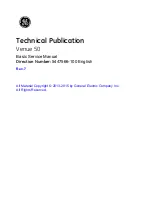
19
Avoid continuous
pulls from extreme angles as this will cause the nylon rope to pile up at one end
of the drum. This can jamb the nylon rope in the winch, causing damage to the winch or the nylon
rope.
Always operate
the winch with an unobstructed view of the winching operation.
All accessories
should be sized to the winching task and should be periodically inspected for
damage that could reduce their strength.
Take appropriate
precautions to disable the winch when not in use or under supervision to prevent
use by children or other unauthorized persons. Do not operate the winch when under the influence
of drugs, alcohol or medication.
When moving
a load, slowly take up the nylon rope slack until it becomes taut. Stop and recheck
all winching connections. Be sure the hook is properly seated. If a nylon sling is used, check the
attachment to the load.
When using a winch
to move a load, place the vehicle transmission in neutral, set the vehicle
parking brake and chock the wheels.
Do not machine
or weld the winch. Such alterations may weaken the structural integrity of the
winch.
Do not power
the winch longer than 120 seconds. The drum and nylon rope/synthetic rope may get
too hot.
Do not connect
the winch to the mains as winch burnout or fatal shock may occur. Never allow
shock loads to be applied to the winch or nylon rope.
Use caution when
pulling or lowering a load up and down a ramp or incline. Keep people, pets and
property clear of the path of the load.
PURPOSE OF USE
Boat winch is convenient, portable tool for pulling a boat, releasing a stuck vehicle or other heavy
pulls. The device has an effective 907 kg pulling capacity. This portable winch has a built-in carry
handle and quick to install mounting plate.
Warnings relating to the use of the winch:
The Cable.
Be sure the cable is in good condition, and is attached properly.
Do not use the winch if the cable is frayed.
Do not replace the cable with a cable of lesser strength.
The Battery.
Be sure the battery is in good condition. Avoid contact with battery acid or other contaminants.
Always wear approved eye protection when working around a battery.
Have the engine running when using the winch, to avoid running the battery down.
Stand Back.
Stay out of the direct line that the cable is pulling. If the cable slips or breaks, it will “whiplash”
along this line.






































